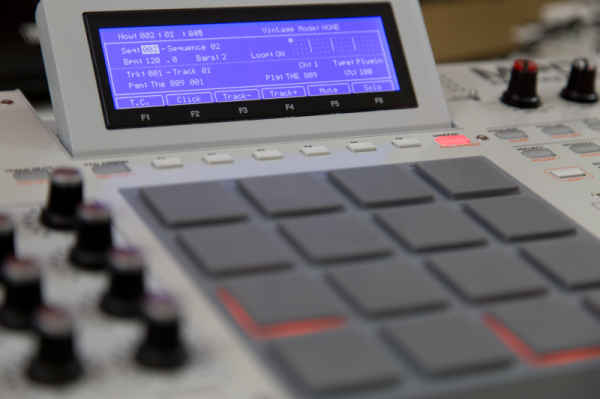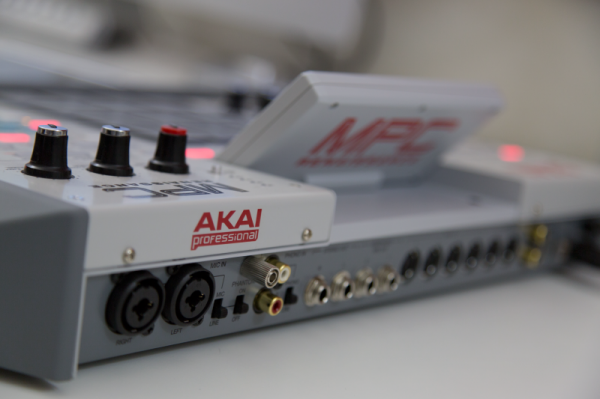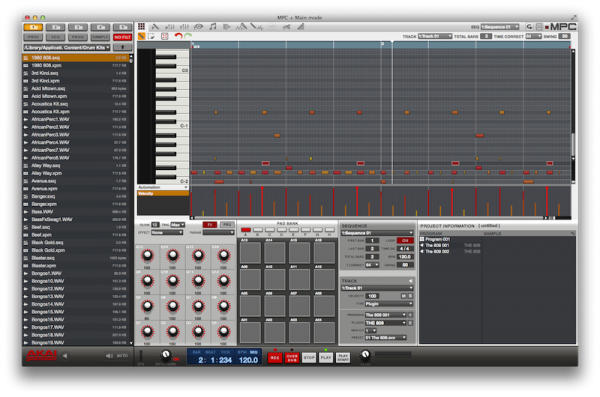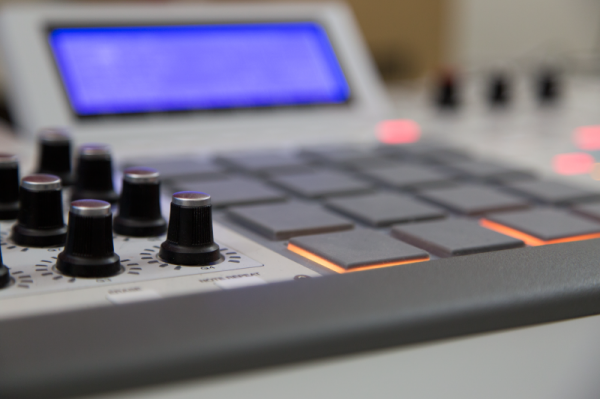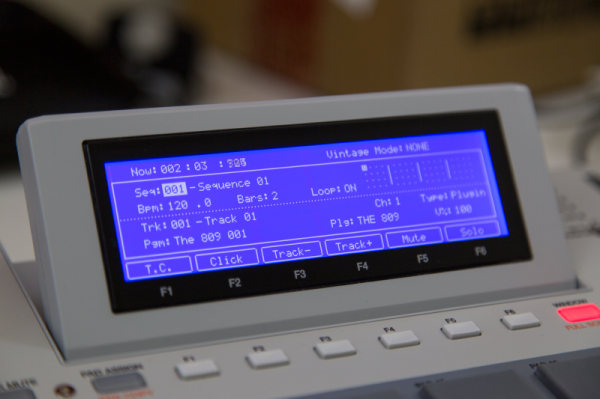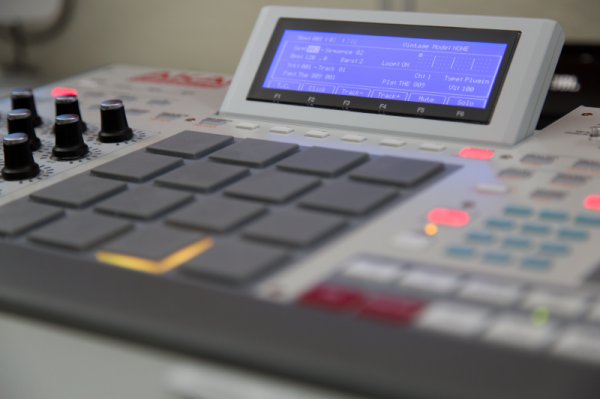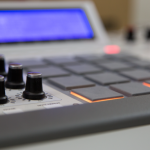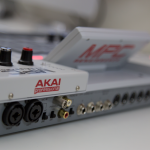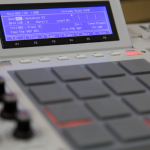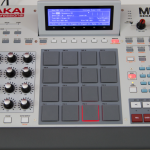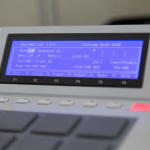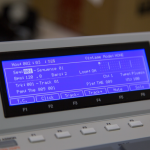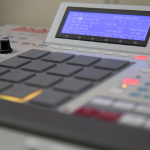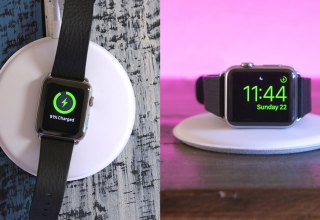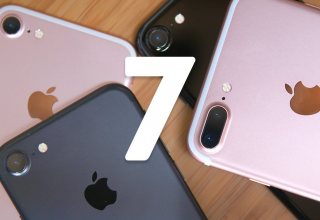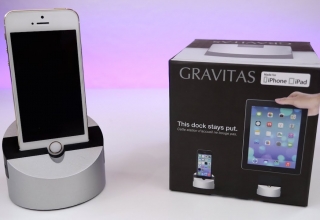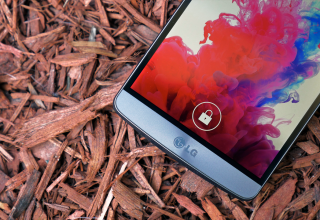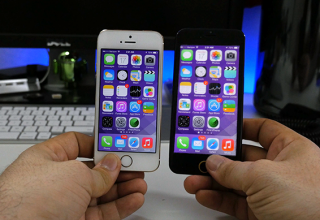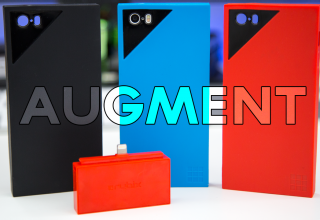Over the last few months, I’ve had the opportunity to demo Akai’s MPC Renaissance. In all honestly, I’ve never been a big MPC type of guy, but this fine piece of hardware and it’s software integration has changed my opinion.
Before using the Renaissance, I had never touched an MPC before. I’ve always used software and MIDI controllers for my production needs, and up until now, that has been good enough. Prior to now, an MPC has always looked like a giant intimidating board of buttons and knobs, but Akai has really changed things up with the new Renaissance model. The Akai Renaissance combines traditional (but updated) MPC hardware with a sleek and smooth software interface. The Renaissance will also function as a full-on audio interface with two XLR 1/4-inch combo inputs and even phantom power.
What’s the trade-off? Well, in order to use the Renaissance, you’ll need to have a connected computer running the MPC software. This new model will not act as a stand-alone unit like MPC hardware in the past. Coming from a software production background, I see this as a plus. The best part is, when connected to a computer, you have the freedom to use the MPC hardware controls just as you would on some of Akai’s older MPC models, but that’s where the tradition ends.
The powerful software interface really changes the MPC’s ease of use. This allows you to make quick, on-the-fly edits to your programs, sequences, and tracks without dealing with the sometimes cumbersome navigation of a standard MPC. But keep in mind, anything that you can do within the software with a mouse, can be done directly from the MPC Renaissance so you’re not losing any hardware usability. Also, with the MPC software you’re getting a 9+ GB sound library that includes all of the classic sounds from the classic MPC3000 including plugin packs like The 809, The Bank, The Noise, and The Wub. Also, keep in mind that you can use the MPC software as a plugin within your favorite DAW, but I prefer the stand-alone method.
Admittedly, being a first time MPC user, I still look at that big board of “buttons and knobs” in fear. There’s definitely a learning curve when it comes to any MPC, but the integrated (and required) software with the Renaissance definitely helps put me in a familiar situation. Like I said, I’m a software production guy, so using the software as a visual reference to my creation is a must-have feature in my opinion. Before we get into some of the specifics, let’s take a look at what Akai’s MPC Renaissance has to offer. Because the MPC Renaissance is such a massive piece of production hardware, we’re going to stick with what I found to be useful during the creation process.
Classic MPC users will definitely appreciate the Renaissance’s “Vintage Mode.” According to Akai, this mode will help ” match the output sound characteristics of class MPCs and other iconic instruments.” This option will help you keep the sound you may be use to with older MPC models, but since I don’t have much (if any) experience with previous MPC units, I tend to keep this mode off.
The next thing I found to be very helpful are the Q-Link controllers. The 16 Q-Link knobs can control just about any aspect of your production from the creation, all the way to mixing and synths. The best part is, the top of each Q-Link knob is touch sensitive. This will allow you to enable/disable effects and parameters and automate just about anything just by tapping on the top of the knob. It’s very effective and works great for quick edits and automation.
The backlit pads provide excellent feedback when it comes to playing. By default, each pad will show the velocity of a tap during use. The backlit pads will also become very helpful when muting tracks or selecting tracks in the program edit mode. Also, these pads are absolutely great when it comes to sensitivity. I found them to be much better than my Maschine.
On the left side of the Renaissance, you’ll notice a very familiar design if you’ve used an MPC before. During my time with this unit, I found it easier to navigate the software and learn about the various buttons while creating. I didn’t have to spend too much time reading any manuals to get a good feel for the hardware because of the wonderful implementation on my Mac via the MPC software.
In my opinion, having the software is far better than the traditional MPC LCD screen. I’d much rather have a better visual understanding of what I’m doing on a computer than stare at a small screen for production purposes. Of course, Akai left the LCD on the Renaissance to keep the traditional style, but I only find it useful for quick reference when creating instead of it’s original all-in-one purpose on older MPC models.
The first thing I judge when using a piece of production equipment for the first time is how long it takes to get from zero to hero. How long will it take me to get up and running/creating with the unit. Fortunately, the MPC Renaissance keeps this curve to a minimum with the integrated software. To be honest, if I had to only use the MPC to create the music and adjust settings, I’d probably be sitting here a lot longer scratching my head instead of creating music. That’s probably my favorite thing about this unit. The software will help you learn the hardware, and if you’re not familiar with software production, the hardware will help you figure out the software. Everything that’s happening on the hardware will be shown in the software.
Check out my unboxing/overview video below:
For those interested in the specifications, here’s what the Renaissance has to offer from a hardware standpoint:
- Fuses legendary MPC production with the processing power of your computer
- Vintage Mode changes output sound character to MPC3000, MPC60 and more
- 16 backlit genuine MPC pads, 16 Q-Link controls, and adjustable backlit LCD screen
- Classic MPC Note Repeat, MPC Swing and MPC transport controls
- MPC SOFTWARE for Mac or PC with 128-track sequencing capability
- Avid Pro Tools Express audio production software now included
- Two XLR-1/4” combo inputs and dedicated turntable input
- Four-channel USB 2.0 audio interface and two-port USB 2.0 hub built in
- Up to eight pad banks―more than any other MPC ever
- Two MIDI inputs and four MIDI outputs
- Stereo 1/4” out, stereo assignable mix 1/4” out & S/PDIF I/O
For more technical specifications on the Renaissance, visit Akai’s dedicated page using this link.
Overall, I found the Renaissance to be a very powerful and productive unit. As I’ve mentioned throughout this review, this is my first experience with an MPC, but it surely won’t be my last. The hardware/software integration is a big step up from the past and gives Akai an edge over many of the software-only production suites.
While I’ve spent plenty of time with the Renaissance over the past few months, I know there’s still much to be learned. I’d definitely recommend this product to any season MPC veteran. For those who are new to the MPC world, this is a great tool and the software integration will definitely lend a helping hand. Don’t expect to be Dr. Dre out of the box, but with time, you’ll discover and learn all of the great features Akai’s MPC Renaissance has to offer.
Currently, the MPC Renaissance is available for around $1,299 through various retailers. For pricing and availability please visit this link, or head on over to Akai’s website to find a retailer near you.
